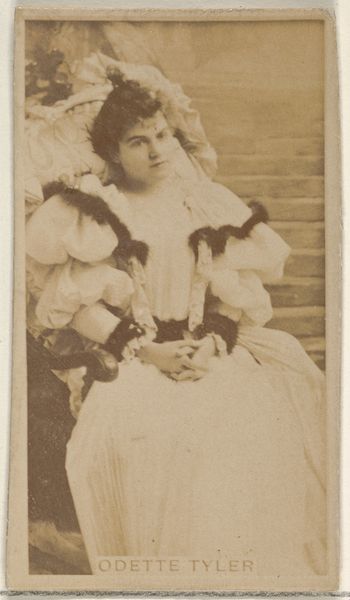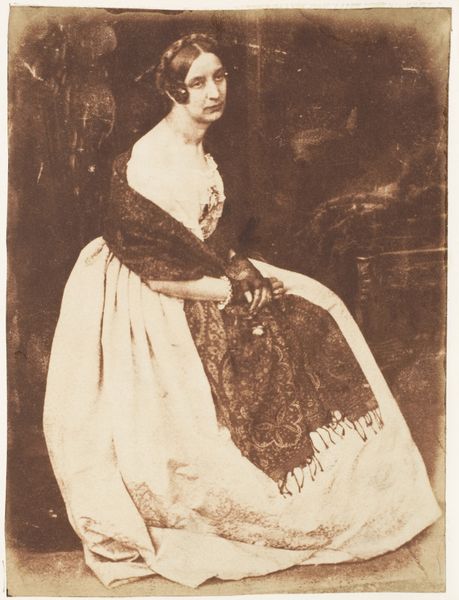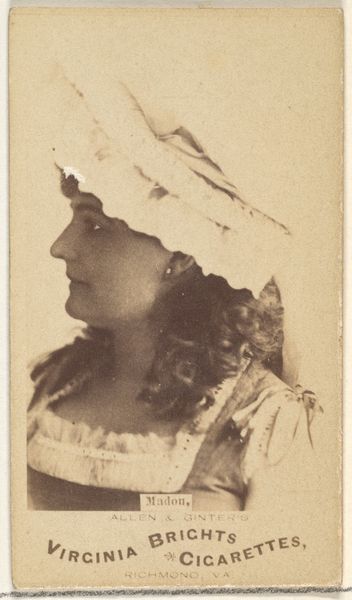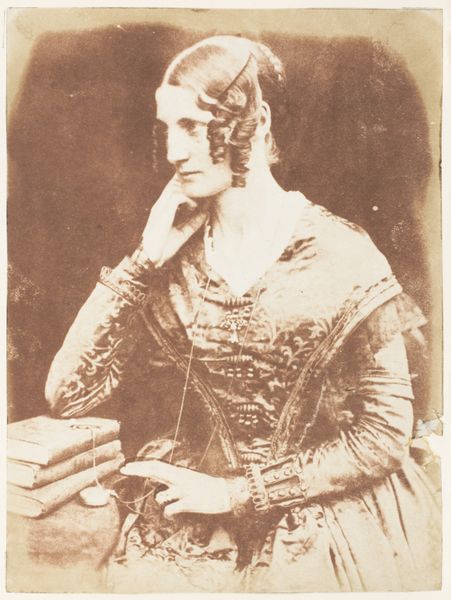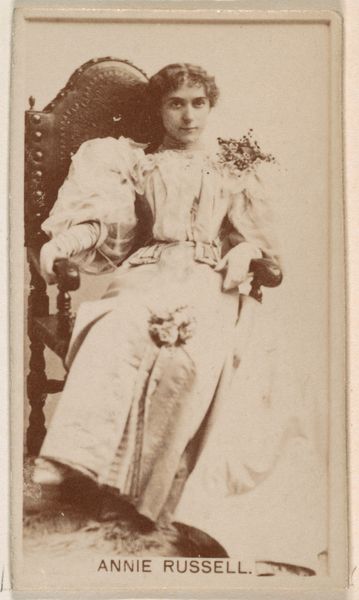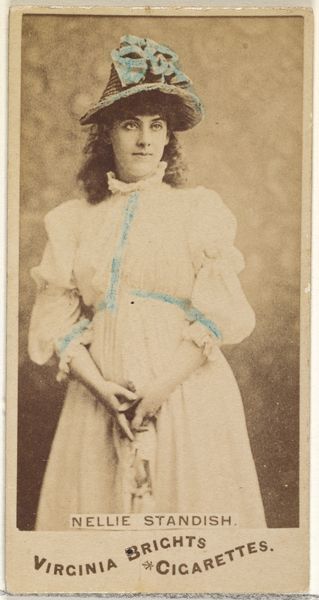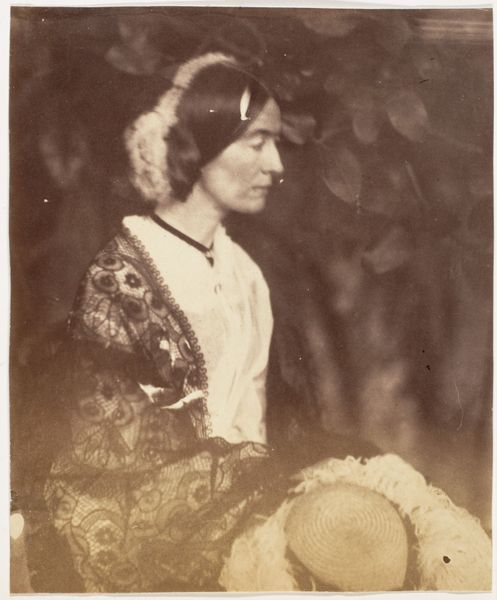
photography, albumen-print
#
portrait
#
photography
#
romanticism
#
albumen-print
Copyright: Public Domain
Editor: So this is "Miss Binney," taken between 1843 and 1847 by Hill and Adamson. It’s an albumen print, so one of the earlier photographs, and what strikes me most is the soft focus and limited tonal range. How does the aesthetic of this photograph influence your interpretation? Curator: It’s critical. The limited tonal range and softness you mentioned create a flattened perspective, emphasizing surface qualities over depth. Notice how this flattening effect pushes her face and intricate dress forward. It becomes a study of texture - the sheen of her hair versus the porous weave of the lace. Do you perceive any deliberate compositional elements? Editor: I see a clear diagonal formed by her arm resting on the book, leading our eye towards her face. Is there a formal contrast between the background and her figure? Curator: Precisely! The undifferentiated background serves primarily as a foil, allowing the figure's detailed textures to emerge more distinctly. The light subtly sculpts her features. Her pose creates angular relationships. How does the textural contrast support the romantic quality assigned to this artwork? Editor: The contrast softens harsh lines and adds depth without relying on vibrant colors or dramatic lighting effects. It feels delicate and dreamlike. I also notice the angle of her neck, as if posing while tilting her head towards something just outside the picture. This feels casual. What's its relationship to the time period, and function as a photograph rather than a painted portrait? Curator: That gentle slope and unfixed expression indicates a novel relationship with the sitters—revealing interiority in a manner that feels decidedly more human and vulnerable than painting of this time often reveals. Consider how such effects work in harmony with her lace cuffs and collar and loose hairdo. What impact do all these elements combine to make? Editor: It reveals the shift in portraiture's function: less about idealizing the sitter, more about capturing a moment, however fleeting. The textures create this aura, but the details speak loudly too! I've begun to think about "aura" not as just a quality but how material structure creates feeling! Thanks! Curator: An astute observation. Remembering that the intrinsic elements yield considerable data makes all analysis possible.
Comments
No comments
Be the first to comment and join the conversation on the ultimate creative platform.

